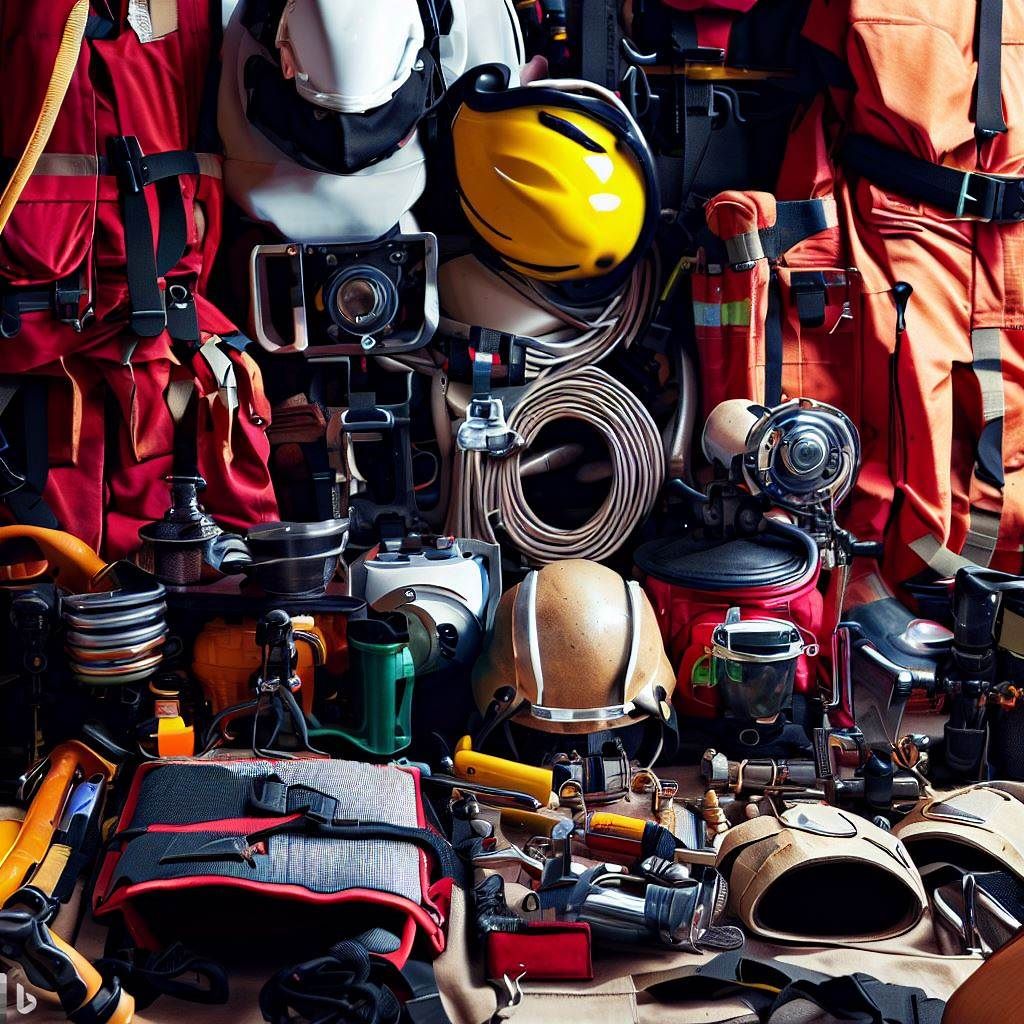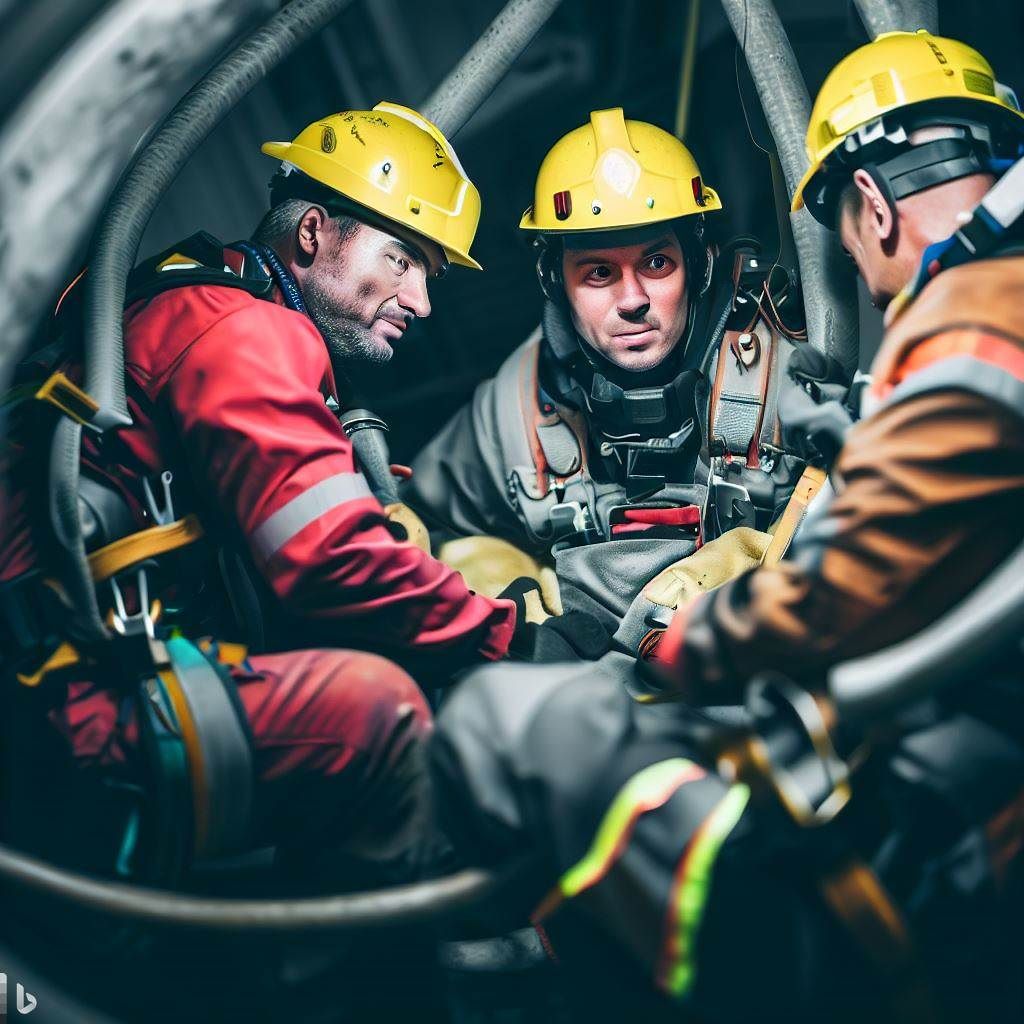Understanding the Essentials: A Comprehensive Guide to Confined Space Rescue Requirements
A confined space rescue is a specialized rescue operation that involves recovering victims trapped in confined spaces. These spaces are typically enclosed or partially enclosed areas not designed for continuous occupancy and have a limited or restricted means of entry or exit.
In these environments, the risk of injury or death from hazardous substances or dangerous conditions, such as lack of oxygen, is significantly high. Therefore, confined space rescue requires unique skills, knowledge, and equipment to safely and effectively conduct operations.
What are Confined Spaces?
Confined spaces are areas that are large enough for a worker to enter and carry out tasks but are not designed for continuous occupancy. These spaces often have limited or restricted means of entry or exit, making them potentially dangerous. They may include but are not limited to, storage tanks, silos, vaults, pits, manholes, tunnels, equipment housings, ductwork, pipelines, etc.
These spaces often pose unseen challenges such as oxygen deficiency, toxic atmospheres, or risk of engulfment, which can be deadly to workers unaware of the potential hazards. Therefore, it’s crucial to understand and adhere to confined space rescue requirements.

Understanding the Importance of Confined Space Rescue
Confined space rescue is not just about responding to an emergency but preventing one. Each year, numerous workers lose their lives while working in confined spaces, many unaware they were entering one.
Understanding the importance of confined space rescue helps ensure that workers are prepared for any situation and that the necessary safety measures are in place to prevent accidents. In many cases, the rapid response and highly trained skills of confined space rescue teams have saved lives, highlighting the critical nature of this specialized field.
Essential Confined Space Rescue Requirements
There are several key requirements for confined space rescue, all crucial for ensuring the safety of rescue workers and the individuals they are tasked with saving. Firstly, a comprehensive risk assessment must be conducted before any rescue operation.
This involves identifying potential hazards, assessing the risks associated with these hazards, and determining the appropriate control measures. Training is another essential requirement for confined space rescue. Rescue workers must be properly trained in confined space entry procedures, rescue techniques, first aid, and rescue equipment.
Training for Confined Space Rescue
Training is a critical component of confined space rescue. It ensures that rescue workers are prepared to respond effectively in various scenarios and equipped with the necessary skills to ensure their safety and the safety of those they are rescuing.
Training should cover a wide range of topics, including hazard recognition, safe work practices, emergency response procedures, and the use of personal protective equipment. It should also include practical exercises that allow rescue workers to practice their skills in a controlled environment.
Equipment Needed for Confined Space Rescue
Various equipment is needed for confined space rescue, including personal protective equipment, rescue harnesses, tripods, winches, breathing apparatus, and gas detection equipment.
Each piece of equipment serves a specific purpose and is crucial for ensuring the safety of rescue workers and the individuals they are rescuing. It’s important that rescue workers are adequately trained in using this equipment and that it is regularly inspected and maintained to ensure it is in good working order.
The Role of a Confined Space Rescue Team
The role of a confined space rescue team is multifaceted. They are responsible for assessing the situation, identifying potential hazards, planning and executing the rescue operation, and providing necessary medical aid.
The team must work together to ensure a successful rescue operation, with each member playing a vital role. The effectiveness of a confined space rescue team often comes down to their training, skills, and the quality of their equipment.
Legal Requirements and Standards for Confined Space Rescue
Some numerous legal requirements and standards govern confined space rescue operations. These regulations are designed to protect workers and ensure that rescue operations are conducted safely and effectively.
These standards cover many areas, including training, equipment, risk assessment, rescue procedures, and emergency response planning. Failure to comply with these standards can result in severe penalties, including fines and imprisonment.

Best Practices for Confined Space Rescue
There are several best practices for confined space rescue that can help ensure rescue workers’ safety and the individuals they are rescuing. These include conducting a thorough risk assessment, ensuring workers are adequately trained, using the appropriate rescue equipment, and having a detailed rescue plan. In addition, it’s important to regularly review and update your confined space rescue procedures to ensure they remain effective and comply with current regulations.
Conclusion
Confined space rescue is a complex and challenging field requiring high skill, knowledge, and preparation. By understanding and adhering to confined space rescue requirements, we can ensure the safety of rescue workers and the individuals they are rescuing.
Frequently Asked Questions:
Q: What is a confined space rescue?
A: A confined space rescue is a specialized rescue operation that involves recovering victims trapped in confined spaces.
Q: What are some examples of confined spaces?
A: Confined spaces include storage tanks, silos, vaults, pits, manholes, tunnels, equipment housings, ductwork, pipelines, and more.
Q: What are some potential hazards in confined spaces?
A: Potential hazards in confined spaces include oxygen deficiency, toxic atmospheres, or risk of engulfment.
Q: What equipment is needed for a confined space rescue?
A: Equipment needed can include personal protective equipment, rescue harnesses, tripods, winches, breathing apparatus, and gas detection equipment.
Q: What are the legal requirements for confined space rescue?
A: Legal requirements can include specific training, appropriate equipment, a thorough risk assessment, established rescue procedures, and planned emergency response.
